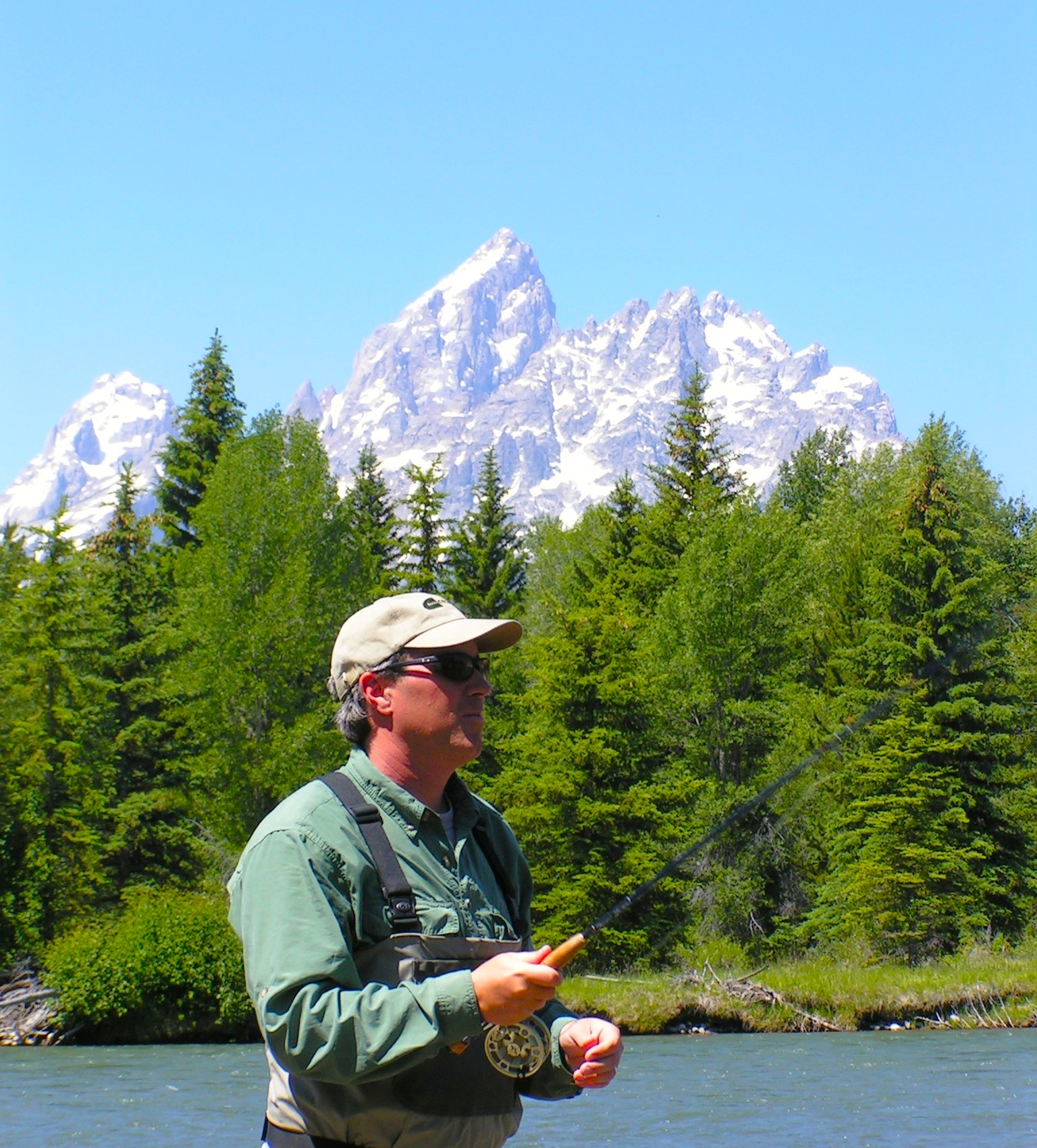Let’s suppose an exciting opportunity has been presented to you! A friend of yours who is an avid fly angler has invited you to go fly fishing on a local mountain stream. Although you’ve always wanted to learn to fly fish, you are a tad nervous about how challenging this activity is known to be.
The first perspective to embrace on your first day of fly fishing is that this outdoor pursuit is meant to be fun and relaxing. While catching a fish your first time out might be exhilarating, it’s very important to remember that catching fish is just a part of fly fishing; there is also fly casting, entomology(study of bugs), wading the river, and of course simply experiencing the restorative health effects of being outdoors in a beautiful serene setting.
The following is a "quick and easy" guide to prepare you for your first day on the water:
1. Gear Up: Essentials to Bring
- Fly Rod & Reel: A 9-foot, 5-weight fly rod is the standard beginner setup. There is no need to go out and buy a $1000 fly rod when you are just learning to cast. Renting or borrowing for the day are also a nice option.
- Fly Line: As a beginner, your fly line (AFFTA weight) should match your rod and reel weight.
- Leaders & Tippets: Have a few different strengths for various conditions. Remember 5x is smaller diameter than 3x. Both monofilament and fluorocarbon are fine choice(that is a discussion for later)
- Flies: Start with a basic selection like dry flies, nymphs, and streamers. Of course it all depends on where you are fishing and for what type of fish, but if you want to have a starting point when you go to the fly shop to purchase a few flies, these flies will get you going with a small pragmatic collection. Don’t go overboard on flies your first time in a fly shop…they can be very expensive. Try these flies: (size 12, 14, 16 Parachute Adams), (size 6,10 Black Wooly Bugger), (size 12, 14 (Brown Elk Hair Caddis), (size 12, 14, 16 Bead Head Pheasant Tail), (size 12, 14, 16 Bead Head Hare’s Ear).
- OPTIONAL: Fishing vest, wading staff, sling or chest pack, net
2. Clothing
- Layered Clothing: Dress in layers for changing weather–shorts, fleece jacket. Quick-drying fabrics are best. Long sleeve sun shirts with a hoodie are great!
- Hat & Sunglasses: A wide-brim hat or ball cap protects from sun and allows you to see, while polarized sunglasses reduce glare. You MUST at ALL TIMES where glasses while casting flies–a hook in the eye could be devastating.
- Comfortable Footwear: water sandals with good river rock traction or dedicated wading boots. Tennis shoes are fine if not entering the water.
- OPTIONAL: Waders, sun gloves, bandana
3. Location Research
- Choose a Spot: Hopefully the person taking you fishing is well versed with the location beforehand; however, if it is a new spot for both of you, Before you head to the water, look on Google Earth or use the internet to figure out the stream logistics— water types, landscape, directions to the stream. Check for accessibility and regulations.
- Know the Fish: Research the local fish species and their preferred flies during this time of year..
4. Safety First
- Life Jacket: If wading in deeper water, always wear a personal flotation device or have a wading staff.
- Eye Protection: This is to protect against bright sun and hooks.
- Sun Protection: Use sunscreen on exposed skin to avoid sunburn.
- Stay Hydrated: Bring plenty of water to stay refreshed.
5. Basic Techniques
- Casting Practice: Spend some time practicing your cast before hitting the water. Again, the internet is your friend–watch short YouTube clips, read about beginner casting instruction. My favorite casting instructors are Mel Krieger, Lefty Kreh, Tim Rajeff, and Joan Wolf.
- Knot Tying: Learn a few essential knots (e.g., improved clinch knot, double surgeon’s knot) to secure flies and tippets.
6. Patience and Mindset
- Relax and Enjoy: Fly fishing is as much about the experience as it is about catching fish. Embrace the peace of nature.
- Observe: Pay attention to your surroundings—watch for insect activity and fish rising.
7. Learn and Adapt
- Read a few Beginner Guides: Guides/Articles such as this one are very helpful when it comes to establishing a big picture perspective of fly fishing
- Watch Short Videos: The internet is a fantastic source of beginner fishing clips.
- Ask Questions: Don’t hesitate to seek advice from local anglers or staff at tackle shops.
- Keep a Journal: Note conditions, what you used, and any fish caught. It’ll help you improve on future trips.
Final Tip
Remember, the main perspective you want to establish on your first day of fly fishing is to relax and enjoy the day outdoors: safety, fun and learning in that order!
By OWL Staff
OWL staff writers are a composite of outdoor wellness gurus and enthusiasts

The First Day of Fly Fishing: A Beginner’s Guide
Let’s suppose an exciting opportunity has been presented to you! A friend of yours who is an avid fly angler has invited you to go

“First Breath” An Introduction to the Underwater World of Scuba Diving
A splash, cloud of bubbles race past………. disoriented at first then blue water, white sand, and silence. You inhale through a foreign




